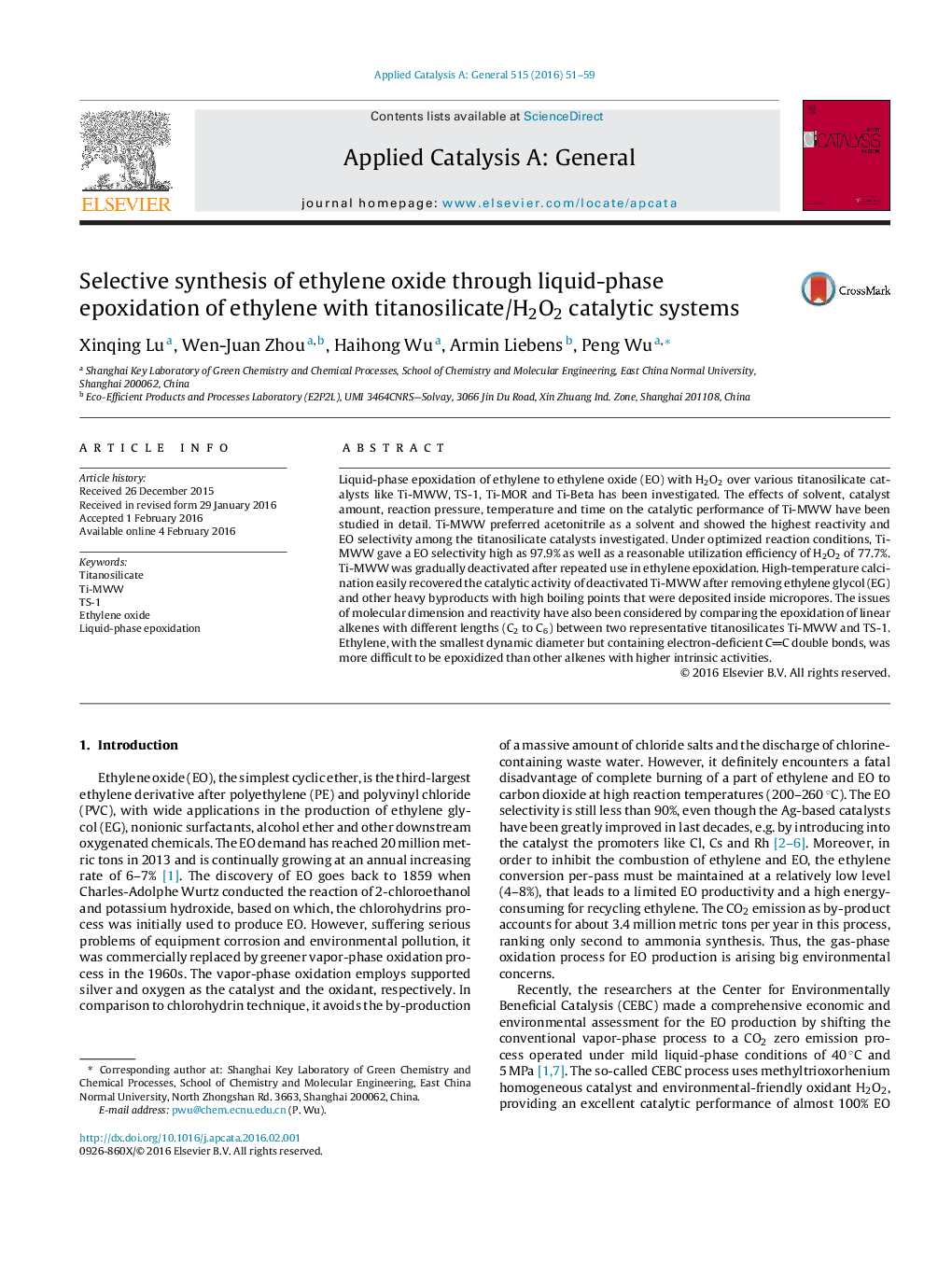| کد مقاله | کد نشریه | سال انتشار | مقاله انگلیسی | نسخه تمام متن |
|---|---|---|---|---|
| 38862 | 45794 | 2016 | 9 صفحه PDF | دانلود رایگان |

• Selective synthesis of ethylene oxide (EO) is realized through epoxidation of ethylene over titanosilicates.
• Ti-MWW is superior to TS-1, Ti-Beta and Ti-MOR in terms of activity and EO selectivity.
• Ti-MWW suppresses effectively the formation of byproducts in an appropriate aprotic solvent of acetonitrile.
• The formation of heavy products like ethylene glycol may deactivate the Ti-MWW catalyst, which can be recovered by calcination.
Liquid-phase epoxidation of ethylene to ethylene oxide (EO) with H2O2 over various titanosilicate catalysts like Ti-MWW, TS-1, Ti-MOR and Ti-Beta has been investigated. The effects of solvent, catalyst amount, reaction pressure, temperature and time on the catalytic performance of Ti-MWW have been studied in detail. Ti-MWW preferred acetonitrile as a solvent and showed the highest reactivity and EO selectivity among the titanosilicate catalysts investigated. Under optimized reaction conditions, Ti-MWW gave a EO selectivity high as 97.9% as well as a reasonable utilization efficiency of H2O2 of 77.7%. Ti-MWW was gradually deactivated after repeated use in ethylene epoxidation. High-temperature calcination easily recovered the catalytic activity of deactivated Ti-MWW after removing ethylene glycol (EG) and other heavy byproducts with high boiling points that were deposited inside micropores. The issues of molecular dimension and reactivity have also been considered by comparing the epoxidation of linear alkenes with different lengths (C2 to C6) between two representative titanosilicates Ti-MWW and TS-1. Ethylene, with the smallest dynamic diameter but containing electron-deficient CC double bonds, was more difficult to be epoxidized than other alkenes with higher intrinsic activities.
Figure optionsDownload high-quality image (137 K)Download as PowerPoint slide
Journal: Applied Catalysis A: General - Volume 515, 10 April 2016, Pages 51–59